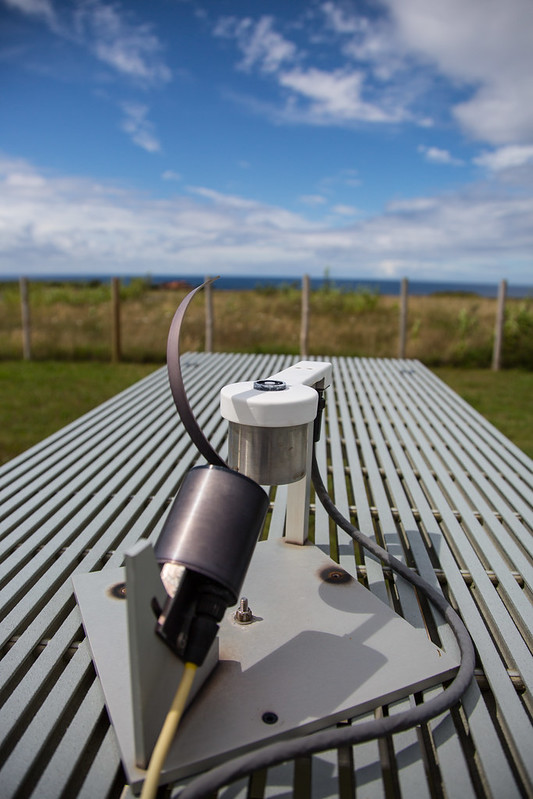ARM Finishes Radiometer Upgrades; Related Data Product Updates Underway
Published: 23 February 2022

In fiscal year 2021, the Atmospheric Radiation Measurement (ARM) user facility completed a major upgrade of shortwave spectral instruments at its ground-based sites.
ARM added a seventh channel to its multifilter rotating shadowband radiometers (MFRSRs), multifilter radiometers, and normal incidence multifilter radiometers. Data from these instruments are used to derive column-integrated properties, such as aerosol optical depth (AOD), cloud optical depth, and surface albedo (reflectivity).
The new channel is in the near-infrared spectral range at a wavelength of 1625 nm. Data collected at this wavelength are expected to help constrain the size distribution of large aerosol particles, resulting in more accurate retrievals of aerosol optical properties. The data also are expected to improve retrievals of cloud optical depth and droplet size, and better constrain surface spectral albedo required for improved characterization of vegetation.
Related to the new channel, ARM updated the Langley VAP for the MFRSR. Under appropriate conditions, a Langley regression plot yields values of the top-of-atmosphere irradiance that represent the response of an instrument in absence of atmosphere, and these values are ultimately useful for instrument calibration. Moreover, these values serve as input for downstream VAPs, such as AOD derived from MFRSR measurements (AOD-MFRSR) and Cloud Optical Properties from the MFRSR (MFRSRCLDOD).
To support data processing at the new channel, corresponding updates are underway for the AOD-MFRSR VAP. It reports cloud-screened AOD obtained from the direct normal irradiance measured by the MFRSRs.
Also in fiscal year 2022, ARM plans to complete an update of the Surface Spectral Albedo (SURFSPECALB) VAP that will incorporate the new channel. SURFSPECALB produces a near-continuous best estimate of spectral albedo using measurements from multifilter radiometers.
Keep up with the Atmospheric Observer
Updates on ARM news, events, and opportunities delivered to your inbox
ARM User Profile
ARM welcomes users from all institutions and nations. A free ARM user account is needed to access ARM data.


















